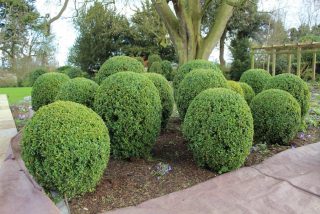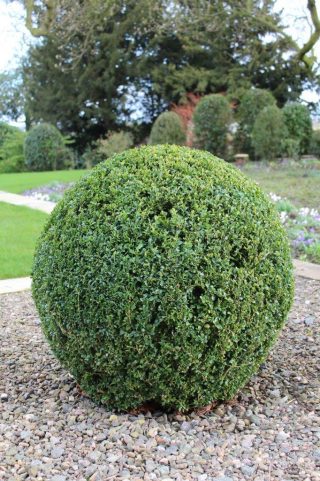Box Topiary
One of the greatest design challenges in creating Morton Hall Gardens was the large space in front of the main entrance with its gently eastwards sloping ground. Directly in front of the house was a huge gravelled area, and the space to the south was dominated by our massive ancient horse chestnut. To formalise the area and to better set off the house, a levelled terrace was built with steps leading down to the lawn. The area around the horse chestnut was landscaped with a rounded border to the lawn and a straight path at the border to the formal South Garden.
To soften the transition between round and angular spaces, groups of topiarized box were planted on either end as well as across what is now called the East Terrace.
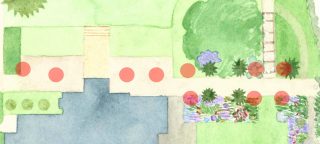
These box groups have undergone several iterations of shape: Originally planted as a mixture of balls and cones in 2008/9, they had morphed into a collection of various regular and irregular forms by 2014. The effect was a disarray of shapes which was not helped by the presence of five massive Irish Yews, remnants of a Victorian alley, which we had been trying to tame through drastic pruning.
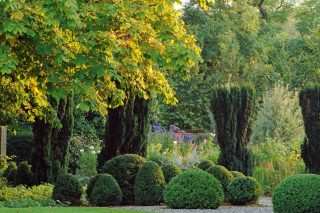
After long deliberation, we took the hard decision to remove the Irish Yews and lighten up the space. The topiary box became families of ‘people’, all in regular shapes, but still a mixture of cones and balls.
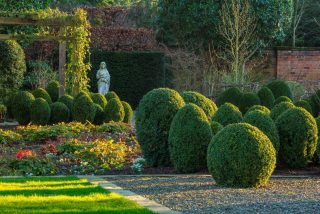
Last year, we had our first encounter with box blight. Warm and wet conditions had provided an ideal breeding ground for the fungus Cylindrocladium buxicola, which resulted in an outbreak affecting a few of the plants. Thankfully, we noticed the damage almost immediately and started treating the plants with a fungicide. We also decided to bring in special expertise and therefore contacted topiarist James Todman (jamestodman.com).
He devised a treatment regime consisting of regular feeding (Topbuxus ‘Health Mix’ as a foliar feed every 4-6 weeks during the growing season), mulching in the autumn and a fungicide treatment in autumn and spring. Having the expert at hand, we also revisited the shapes of our box families and decided that we would round off the top of the cones. Our ‘people’ are now becoming ‘giants’ marbles’, playfully scattered across the terrace.
With this brief, James set to work. In the first session, the box groups were treated with a fungicide. Last year’s blight outbreak has become dormant (for now), and the plants are recovering.
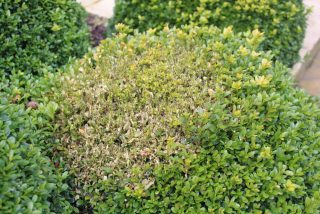
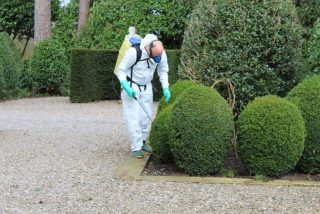
Following the treatment, clipping commenced, using a mixture of hand and electric shears. James always disinfects his tools in a bleach solution before moving to the next plant.
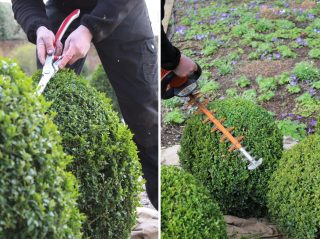
The tops of all cones were rounded off.
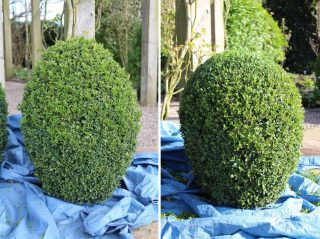
The transformation will be gradual and take a while, but we are quite taken with its first stage!
